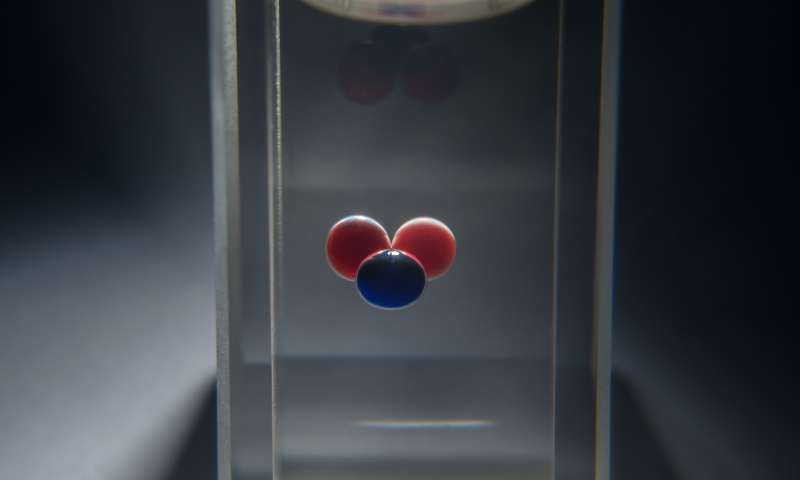Classical computers deal with information that’s stored in bits while quantum computers deal with information that’s stored in qubits. However, that’s not that the only way we can store information. Another way is through the use of chemistry. Scientists over at the Institute of Physical Chemistry of the Polish Academy of Sciences (IPC PAS) have come up with a way in which chemical droplets can store information too in a chemical memory unit called a “chit”.
The chip itself consists of three droplets and in between these droplets is where chemical reactions take place. Any memory is planted in the Belousov-Zhabotinsky (BZ) reaction. This reacts in an oscillatory manner and each time creates a new reaction over and over an infinite number of times. Two catalysts are also at work during this process. The first – ferroin – provides a color change, while the second – ruthenium – makes the reaction sensitive to light. When a blue light is shone on the reaction, it stops oscillating and this is due to the light-sensitive feature.

So now, not only do we have classical and quantum computing, but we also have a form of chemical computing too where all the components are chemical opposed to bits or qubits. While the race for quantum computers continues, this new branch of computing gives researchers a whole new way of being able to store, read, and transfer information. Maybe chemical computing will one day prove even more useful than quantum computing. Who knows? But for now, we’ll just have to wait and see what comes of this new form of information.
Related Links;
- Researchers Have Just Devised a Way to Store Information in Chemicals
- First one-bit chemical memory unit: The ‘chit’
- The first one-bit chemical memory unit—the ‘chit’
More News to Read











